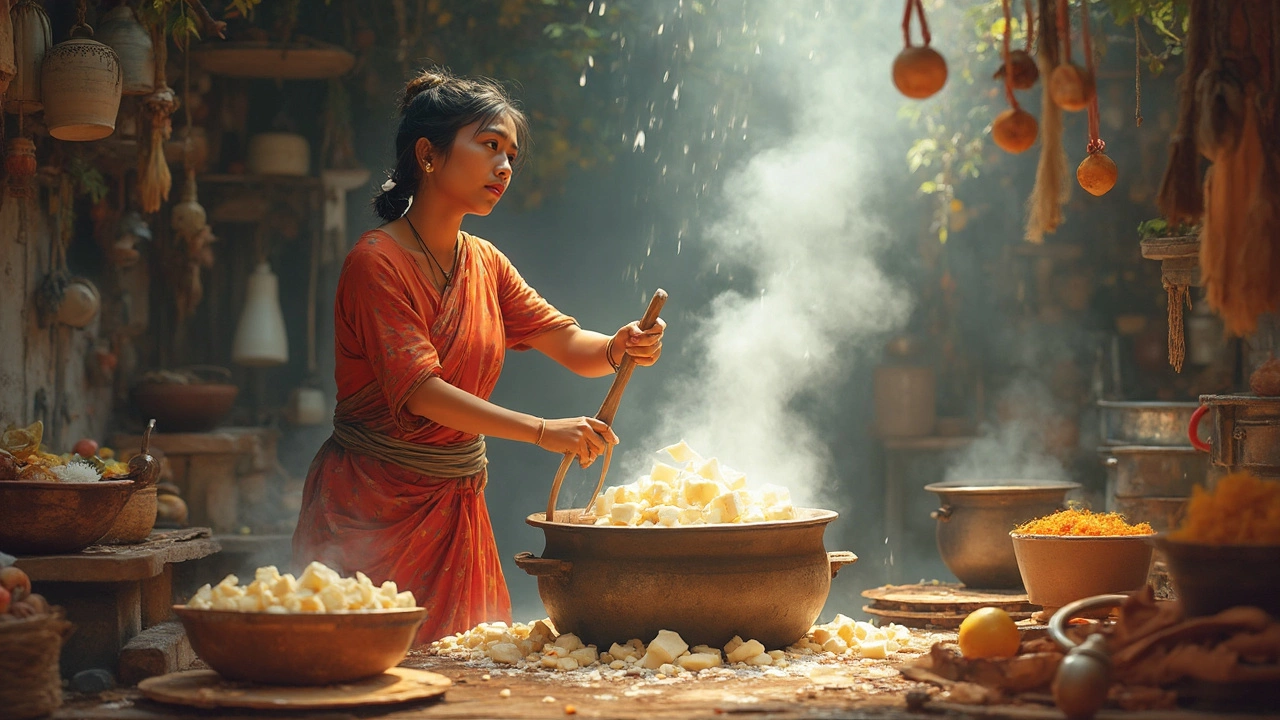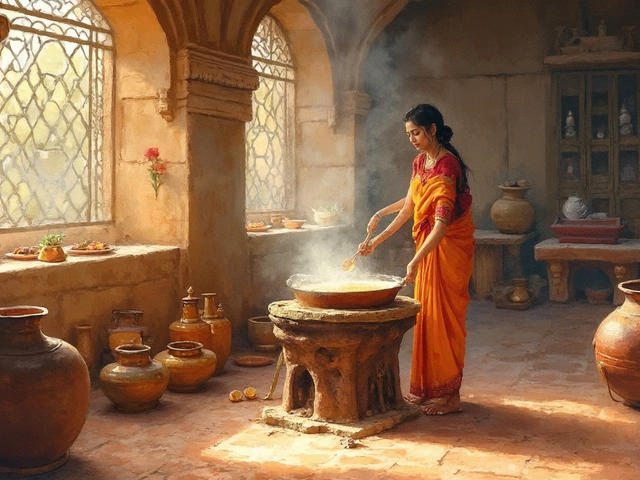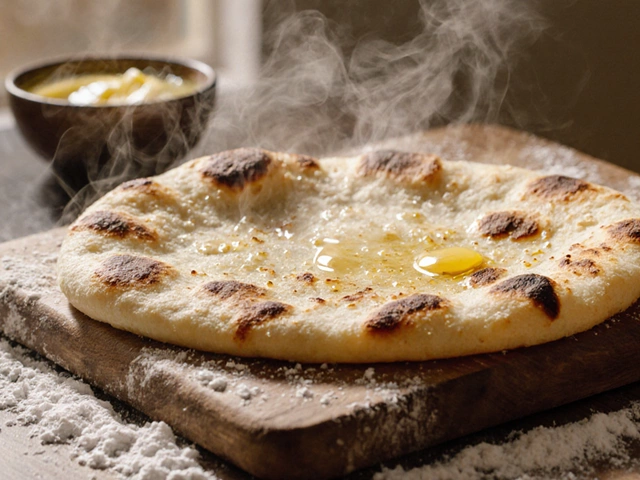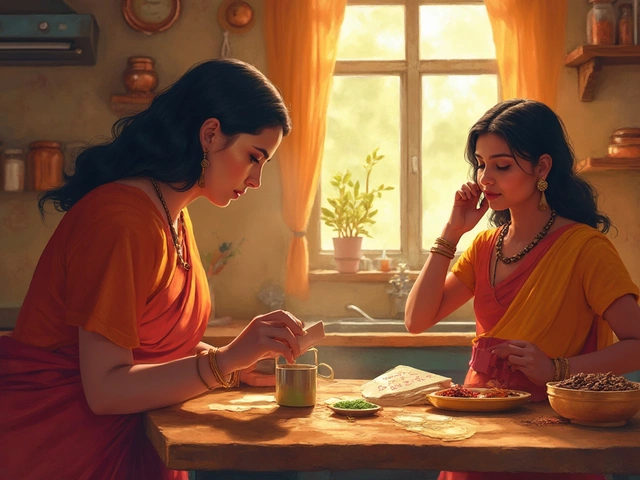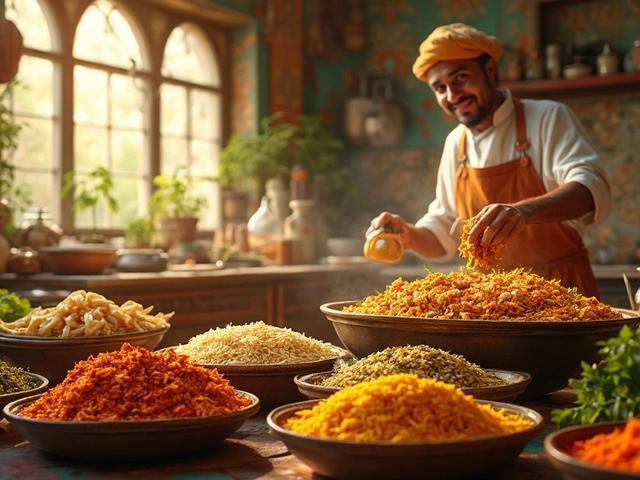So, you're pondering about paneer and veganism? You're not alone. Paneer, the creamy cheese cube that floats invitingly in Indian dishes, is a curious food item. Many folks mistakenly think it's a vegan delight because it appears so pure and simple. But hold onto your laksa spices, because it's not. Paneer is made from milk, the classic indicator that it's not vegan.
Here’s the scoop: Paneer is essentially Indian cottage cheese. The process starts with curdling hot milk using something acidic like lemon juice or vinegar. The curd separates from the whey, and those lovely white curds are pressed into the paneer block we know and love. It's all about milk, so vegans, not your thing!
- Understanding Paneer: The Basics
- Why Paneer Isn't Vegan: The Dairy Factor
- Fun Facts About Paneer Making
- Vegan Alternatives to Paneer
Understanding Paneer: The Basics
Let's get into the nitty-gritty of paneer. From a distance, it might seem like any other cheese, but paneer has its own unique charm. It's a fresh cheese, meaning it doesn't go through the aging process like cheddar or parmesan. Instead, it's prepared by curdling milk with an acidic agent such as lemon juice or vinegar. Once the curds form, they're strained and pressed to form a solid block.
How It's Made
The magic of homemade paneer is in its simplicity. Want to whip some up at home? All you really need is milk and an acid. Start by heating the milk until it’s nearly boiling. Then, add your choice of acid—lemon juice is a favorite for its tangy hint—and watch as the milk separates into curds and whey. Strain the curds through a cheesecloth, and with a bit of pressure, you’ve got yourself some fresh paneer.
Paneer's Star Qualities
What makes paneer stand out in the cheese world? For one, it's non-melting, which is rare for cheeses. This makes it perfect for frying or grilling, as it holds its shape well in heat. Plus, it's a rich source of protein, making it a hit among vegetarians looking to bump up their intake.
Here's something fun: In India, paneer often makes its way into sweet dishes too. It’s quite the versatile player!
Nutrition Tidbits
Wondering about paneer nutrition? Here's the low-down. Paneer is packed with protein and calcium, good news for those keen on boosting their bone health. However, it’s also rich in fats, so moderation is key, especially if you're keeping an eye on your waistline.
Why Paneer Isn't Vegan: The Dairy Factor
So, you've heard the buzz about paneer not being vegan, but what's the real deal? Simply put, it's all about dairy. Paneer is made from milk, which is the core of its creamy goodness, making it strictly off-limits for vegans. Let's dive a little deeper into the dairy aspect of paneer.
What is Milk's Role in Paneer?
Milk is the star ingredient when it comes to making paneer. The process involves heating the milk until it's just about to boil, and then adding an acidic agent like lemon juice or vinegar. This causes the milk to curdle, separating into solid curds and liquid whey.
The curds are then gathered and pressed to form a block of paneer. Without milk, there is no paneer. And that's why this cheese isn't part of a vegan diet.
Comparing Paneer With Vegan Cheese
Some folks might wonder if vegan cheese can substitute for paneer. Well, vegan cheese is made from plant-based ingredients like nuts, seeds, or soy. These don't replicate the unique texture and flavor of paneer perfectly. So, while they might work in some dishes, it won't be exactly the same.
The Nutritional Angle
Here's a quick look at the dairy contents of paneer as opposed to plant-based options:
| Component | Paneer | Vegan Cheese |
|---|---|---|
| Protein | High | Variable (depends on base ingredient) |
| Saturated Fat | Moderate to High | Low to Moderate |
| Calcium | High | Varies (based on fortification) |
Understanding these differences helps in making informed choices, especially if you're navigating between dairy and plant-based diets.
So there you have it, paneer lovers and curious cooks! Now you know why paneer isn't vegan and the significant role dairy plays in its creation. Next time you're faced with a choice between paneer and its vegan counterparts, you'll have the scoop!
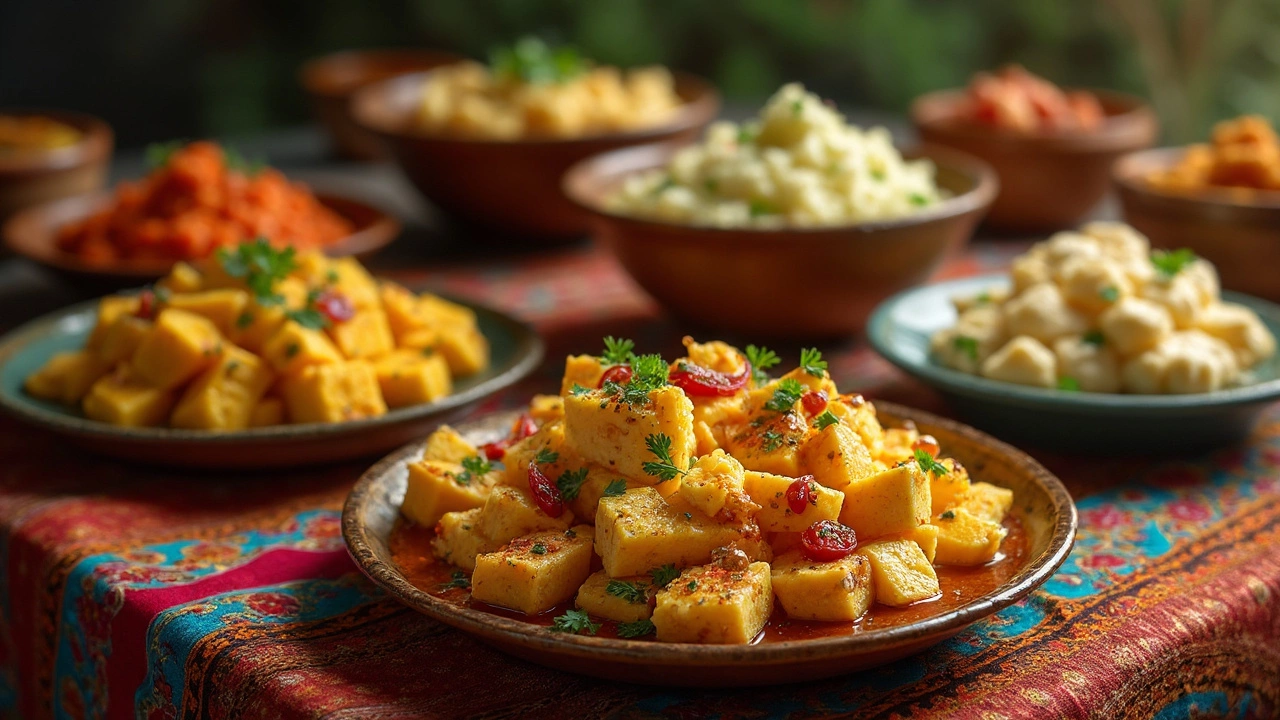
Fun Facts About Paneer Making
Making paneer might seem like a culinary mystery to some, but it's actually a pretty straightforward process. This humble cheese is a staple in Indian cooking and boasts some quirky facts that might surprise you.
The Simplicity of Three Ingredients
To make paneer at home, you only need three basic ingredients: milk, an acid (like lemon juice or vinegar), and a bit of patience. Yep, that's it! No complex methods or exotic components involved. The simplicity is what makes homemade paneer so appealing.
Milk Matters: Quality Counts
The type of milk you use can significantly affect the end result. Whole milk is usually best because it yields a richer and creamier texture. And did you know? Using low-fat milk can still give you paneer, but it might be a little crumbly compared to its creamier counterpart.
Quick Set Cheese
Unlike other cheeses, paneer doesn't need rennet or cultures to set. The curdling happens instantly when the hot milk meets the acid, making paneer one of the quickest cheeses you can make. In less than an hour, you can go from milk to delicious, soft paneer.
Paneer vs. Ricotta
Ever thought paneer looks like ricotta? You're not wrong! Both are fresh cheeses, but the difference lies in the technique. While both involve curdling milk, paneer is pressed into blocks, whereas ricotta stays loose.
Table of Nutritional Benefits
Curious about what nutrients you're packing with paneer? This easy-to-make cheese isn't just delicious; it's packed with proteins which are crucial for repairing body tissues.
| Nutrient | Amount per 100g |
|---|---|
| Protein | 18g |
| Calcium | 200mg |
| Fat | 20g |
Whether you're a budding chef or just love learning about food, these facts make paneer even more fascinating. Next time you whip up a batch, you'll know just how special that creamy cheese cube really is!
Vegan Alternatives to Paneer
Missing paneer but sticking to a vegan lifestyle? No worries! There are plenty of plant-based options that mimic the texture and flavor of paneer. Some of them might even surprise you with their versatility and taste. Let's dive into a few that are easy to find or make at home.
Tofu: The Go-To Choice
Tofu is probably the most well-known substitute for paneer, and for a good reason. It has a similar texture and can soak up flavors just like paneer does. Firm tofu is your best bet here. You can grill it, fry it, or toss it into your favorite curry. If you're feeling fancy, season it with some turmeric and salt, and you'll get that familiar color and taste.
Cashew Cheese: A Creamy Alternative
If you're after something creamy, cashew cheese is a fantastic option. Made by blending soaked cashews with water, nutritional yeast, lemon juice, and some seasonings, this cheese can be quite a treat. It's more sauce-like, but a little creativity can have it shaped into thicker forms for certain dishes.
Chickpea Tofu: High Protein Choice
Ever heard of chickpea tofu? Also known as Burmese tofu, this uses chickpea flour instead of soy. It's great for those with soy allergies or if you're just in the mood for something different. It sets well and can be cooked just like homemade paneer, making it super convenient.
Store-Bought Vegan Cheeses
These days, the market is flooded with vegan cheeses. Some brands specifically make paneer alternatives. Check your local organic store, and you're likely to find a few options. Look for nut-based or coconut-based ones for the best texture.
If you're the kind who loves a good fact, you might find it interesting that about 65% of the world's population has a reduced ability to digest lactose after infancy. This could be why vegan alternatives to traditional dairy products are on the rise.
| Alternative | Base Ingredient |
|---|---|
| Tofu | Soybeans |
| Cashew Cheese | Cashews |
| Chickpea Tofu | Chickpea Flour |
Trying these alternatives could open up new culinary doors, helping you enjoy your favorite dishes while staying true to your vegan values. Think of it as a delicious experiment in your kitchen lab!
- Poplular Tags
- paneer
- vegan
- homemade paneer
- dairy





